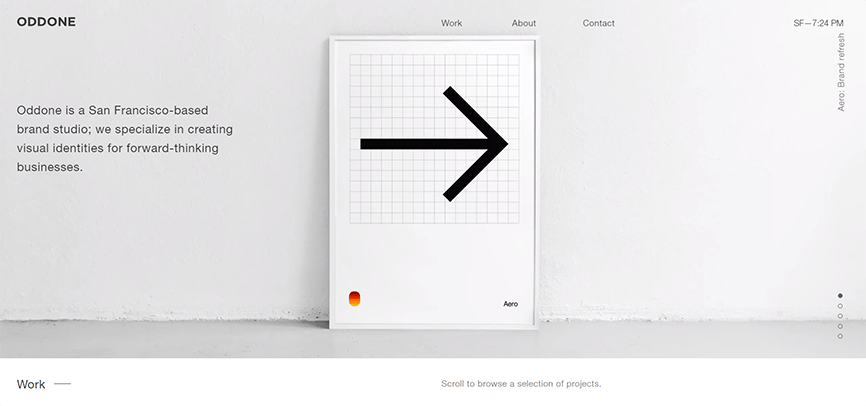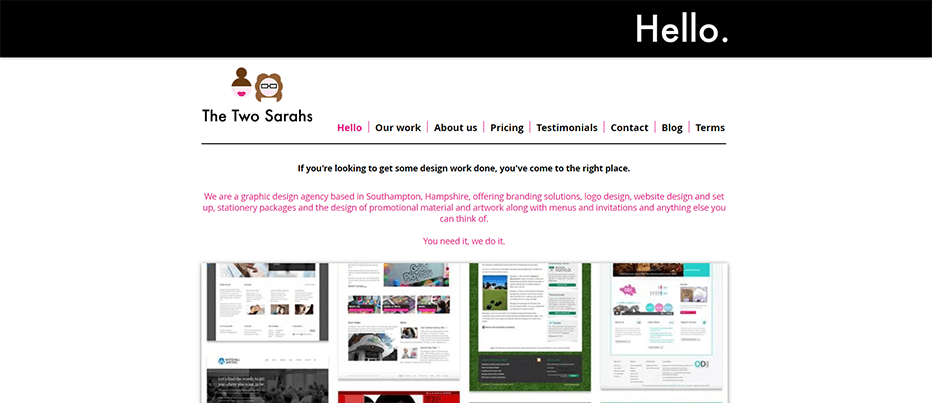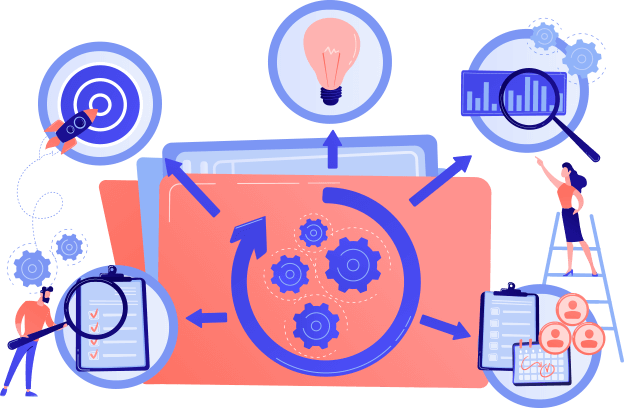Team building exercises are kind of a staple in the workplace. If you’ve held a job, it’s more than likely you’ve taken part in ice breaker questions or a team lunch at one point or another.
As it turns out, there is a right way and a wrong way to build your team’s connection. This might explain why some team-building activities are met with eye rolls and groans, while others leave us feeling appreciative and bonded.
Brian Scudamore said in Forbes, “Activities that overtly aim to draw in leadership lessons or practical takeaways are less powerful. Spending time together, sharing an experience or working towards a common goal allows bonding to happen more organically and far more effectively.”
This makes sense. It explains why many dread traditional corporate team-building activities, even though we love the people we work with.

Strong social connections at work are essential – they make people happier, less stressed, have increased engagement and loyalty, and are healthier. All of which results in better performance at work. So if you wouldn’t have fun doing something with your group of friends, you probably won’t enjoy it with your work colleagues. Team-building activities should be enjoyable, so you can relax, be your true self, and connect with your employees personally.
However, the modern workplace is looking a lot different these days. Even before the global pandemic, remote work was becoming increasingly popular. And now that most of us have had a taste of the work from home life, it seems like it’s here to stay, at least in some capacity.
Remote work has a lot of benefits; for example, you save time and money on travel, and you can rock athleisure-wear most days. But there are some downsides too – more people feel lonely and less connected, which affects productivity. A study on neuro-behavioral economics in the work culture found that companies can alleviate remote work-related stress by implementing virtual team-building activities.
So with remote work more popular than ever, team-building is the most important it’s ever been. Although team-building activities on conference calls pose new challenges, there are several ways to make it as productive and effective as in person.
Here are 10 fun team-building activities you can do over a video call:

1. Virtual Scavenger Hunt
A virtual scavenger hunt is where players scramble to complete a list of challenges before the time is up. In most cases, the participants will have to find items in their homes (such as their favorite mug) or something online (a funny work-related meme). It can also be activity-based; for example, participants may have to do ten push-ups or bake a mug cake.
Here is a quick rundown of how a virtual scavenger hunt can work:
Step 1: Choose a theme. Make it fun and creative to get everyone excited. Some simple ideas are childhood, travel, holiday, or murder mystery.
Step 2: Set out some rules. You’ll want to break down how this will work, so set out the time limit, the list of items that the team members have to find, what the teams are, where the team will share the items, how they document them, what the prize is, and so on.
This is an activity that isn’t overtly related to your industry or workplace, so it gives your employees a chance to have a good time together and get creative. You could even make this a monthly activity where different departments take turns planning the scavenger hunt. Make sure you switch up the teams each time so other coworkers get to know one another.
2. Team Trivia
One great way to build a genuine human connection between remote workers is to engage in regular socializing. Recreating pub night trivia on a video call can be a great way to achieve this. Use a platform like Kahoot to create your own team trivia. The trivia doesn’t have to be work or industry-focused, but it can be fun to throw in a few relevant questions. Some topics you could quiz them on are pop culture, sports, history, and geography. You could also get team members to add in some personal questions to gauge how well they know one another.
Mobile marketing start-up Liftoff integrated Kahoot into their team sessions and company all-hands meetings to connect their fast-growing team. Liftoff employees found that playing Kahoot together has helped break down communication barriers, get to know one another better, and enhance the team culture across several offices. They offer prizes to the winning team, giving everyone a good reason to compete.
Make your team trivia event more interesting by raising the stakes. Offer prizes such as free lunch, gift cards, wine, or even an extra day off!

3. Happy hour
Who doesn’t love a good happy hour? Hosting a regular happy hour can help your team better know each other in a relaxed environment. While there are many games you can play during happy hour, it can also simply be a chance to discuss what is going on outside of work. You can combine the two as well, setting out time for a game and a chat.
Set up a drinking game where you take a sip of your drink when someone says certain phrases or does something specific. Here are some examples of when everyone would have to take a sip of their drink:
- “Can everyone hear me?”
- “We lost you for a minute there.”
- When someone’s pet comes into the frame.
- When someone tries talking on mute.
Want to make this game even more fun? Make it personal! Create rules surrounded by the quirky and funny things that your coworkers tend to do.
Keep in mind – alcohol is optional with this game. It can be played with any beverage your team would like.
4. Team workout
Got a yogi on board? Why not have them run a low-impact yoga class for your team? If yoga isn’t your jam, it can be anything. Taekwondo, Bootcamp, HIIT, Salsa – the choices are endless. Many studios offer online live classes, so you could always hire them to provide your team with a virtual class once a week.
Doing a workout together is a great way to sweat it out and bond. You’ll release some built-up endorphins and create memories that last.

5. Express Gratitude
A simple thank you goes a long way at work. Practicing gratitude has a heap of benefits, such as higher retention rates and increased employee satisfaction. By implementing gratitude as a team-building activity in virtual meetings, we can help employees build stronger bonds. Employees will reflect on what they appreciate about their team, express their thankfulness, and foster a culture of gratitude.
One way to do this is to make it a part of your weekly team meetings. It may be a bit too time-consuming and irrelevant for an all-hands meeting if you’re company is big, so you can always include it in smaller department meetings. Have each team member go around and acknowledge one person who went above and beyond in the past week and why they are grateful for them. It’s human nature to want recognition, so don’t be surprised if you see your employees making changes in their performance so they are more likely to get a taste of that recognition!
6. Virtual Escape Room
Virtual escape rooms put your team’s collaboration skills to the test. Many companies offer online virtual escape room hosting, so all you have to do is show up. They can accommodate teams of any size and happen in real-time. The online escape room will require your team to solve time-sensitive puzzles and answer trivia. Some services even offer tailored questions and clues to fit your industry. There are lots of different themes to choose from, so if your team loves it, you can easily make this a regular event!

7. Book club
Got a team full of book worms? Host a monthly book club!
Choose a book that your team will love each month (or quarter, whatever suits) and discuss it over video chat. You’ll quickly get to know more about your teammate’s opinions and tastes. You can even choose books that are industry-related or promote self-development.
You could also take turns choosing the book. When each team member gets a chance to choose a book, their team gets a chance to learn a lot about them. Whether they choose their favorite book or one they’ve always wanted to read, it says a lot about who they are as a person.
The goal is to spark interesting discussions and memories that encourage your employees to relate to one another long-term.
8. Wine tasting
What better way to unwind at the end of a long week than a virtual wine tasting with your team? Team members will be sent a kit with a selection of samples of wine they can swirl, sniff and sip. They’ll learn about the different regions, types, and the best pairings. Make sure everyone has some cheese to go with it!
‘Is this really a team-building activity?’ you may be thinking.

Yes, yes it is! A virtual wine tasting isn’t just a chance to drink delicious wine. You’re actively spending time with your team, learning more about what they like, in a relaxed, no-pressure environment.
Your team not really into wine? Or do you just want to be more inclusive of those who don’t drink? No problem! There are so many different things you can do for a tasting that doesn’t involve booze. You could choose a coffee, tea, cheese, or even a chocolate tasting. Either way, your team will love this bonding experience.
Just be sure to inquire about any special dietary requirements or restrictions your team may have before organizing a tasting to avoid anybody feeling left out.
9. Show and tell
Show and tell is no longer just for kindergartners! A virtual show and tell is a great team-building activity to help employees get to know each other better.
The premise is simple – show off something you own or have created and tell your team about it and why it means something to you. It can be anything from memorabilia of your favorite sports team, a symbol of cultural heritage, a hobby you’ve been working on, or a professional achievement. You can have a video conference dedicated to this activity, or it can be spread out over meetings, so a different person has a turn each week.
10. PowerPoint Party
A PowerPoint party is when each person picks a random topic to present, which should last about five minutes. It can be anything – their favorite animal, how candy is made, a tropical destination. This activity gives teammates a chance to show off their personalities, sense of humor, and quirks.
Simple team bonding activities can pay massive dividends
No matter what exercise you choose, the results are clear – a team that is comfortable and social with each other is a team that will go that extra mile and drives high-performance results for your company. At your next Zoom hangout, try some of these activities and see for yourself!








































 Benjamin Spall, co-author of the book My Morning Routine: How Successful People Start Every Day Inspired, defines a morning routine as “
Benjamin Spall, co-author of the book My Morning Routine: How Successful People Start Every Day Inspired, defines a morning routine as “ Laura Vanderkam, the author of What The Most Successful People Do Before Breakfast,
Laura Vanderkam, the author of What The Most Successful People Do Before Breakfast, 































